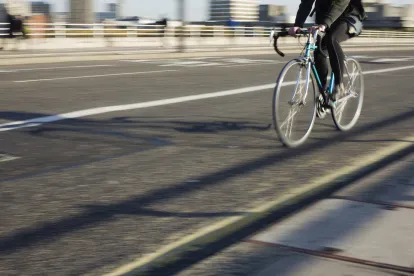On December 18, 2019, the United States Court of Appeals for the Federal Circuit, in Fox Factory v. SRAM, Nos. 2018-2024 and 2018-2025, reversed the Board’s Final Written Decision in a pair of inter partes reviews (“IPRs”) that the challenged claims of U.S. Patent No. 9,182,027 (the "’027 patent") were not invalid as obvious, and remanded for further proceedings. The Federal Circuit panel held on appeal that the Patent Trial and Appeals Board (“PTAB”) applied an incorrect standard when evaluating the commercial success secondary consideration of nonobviousness, and improperly presumed a nexus between the challenged claims and SRAM’s commercial embodiment (its “X-Sync” bicycle chainring), which included “critical” features other than those claimed in the ’027 patent.
The ’027 patent generally covers a bicycle chainring designed to better prevent the bicycle chain from slipping off the chainring when in use. The challenged independent claims describe alternating narrow and wide tooth tips and chainring teeth offset from the center of the chainring towards or away from the frame of the bicycle. In addition to these claimed features, the ’027 patent specification discloses other features of a chainring to keep the chain engaged, such as forwardly protruding tooth tips, a hook feature of the rear portion of each tooth, and a requirement that the narrow and wide teeth fill at least 80% of the corresponding distance in the engaged bicycle chain. This last feature, which the court called ">80% gap filling," was specifically claimed by U.S. Patent No. 9,291,250 (the "’250 patent"), a continuation of the challenged ’027 patent.
Heavily relying on evidence of secondary indicia of nonobviousness, the ’027 patent was not invalid as obvious because of the commercial success of SRAM’s X-Sync line of chainrings—all claimed elements of the challenged claims were disclosed in the prior art. The PTAB determined that SRAM was entitled to a presumption of nexus between the X-Sync products and the challenged claims, even though SRAM’s X-Sync chainrings include numerous features to keep the chain engaged on the chainring; features that were not claimed in the ’027 patent.
On appeal, the Federal Circuit held that the PTAB applied an incorrect standard and that SRAM was not entitled to a presumption of nexus between the commercial success of the X-Sync chainrings and the challenged claims. Such a nexus may be presumed when the secondary considerations evidence is tied to a product that embodies and is coextensive with the claimed features. But where a patented invention is only a component of a commercially successful machine or process, like the X-Sync products at issue, secondary indicia of commercial success is not coextensive and nexus may not be presumed.
The Federal Circuit, therefore, held that SRAM was not entitled to a presumption of nexus because its X-Sync chainrings included a number of features to keep chains engaged, in addition to those claimed by the ’027 patent. While nexus may still be presumed if the unclaimed features are insignificant, SRAM itself described one of the unclaimed features (the >80% gap filling) as the “heart” of the continuation ’250 patent and “critical” to X-Sync’s ability to retain the chain. Indeed, SRAM’s ability to subsequently patent the additional features unclaimed in the ’027 patent indicated to the court that those additional features are not insignificant. Thus, where SRAM’s X-Sync commercial embodiment had the >80% gap filling and other unclaimed features, the Federal Circuit panel held that PTAB erred in presuming a nexus between X-Sync and the challenged claims. As a result, the court remanded back to the PTAB where SRAM will not have a presumption of nexus, but instead will have the burden to prove that its evidence of secondary considerations is attributable to only the challenged claimed features.
Note: The authors are all avid cyclists, and while they are no strangers to dropped chains, they currently ride Campagnolo and/or Shimano drivetrains.






 />i
/>i

